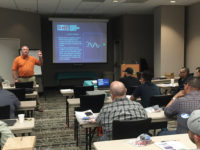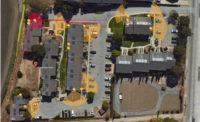As telecommunications technology moves further and further away from communications based on traditional landline voice, engineered systems distributors are gaining more flexibility in how they can meet communications requirements for commercial fire systems.
For years these systems were required to have two phone lines to help ensure that a fire alarm would get through to the central monitoring station — and the phone lines had to be tested every 24 hours to make sure they were functional. More recently many jurisdictions have adopted new fire alarm codes that allow one of the phone lines to be replaced with a wireless or landline broadband connection. Some authorities having jurisdiction (AHJs) will even allow fire systems to use a single digital cellular, landline broadband Internet protocol (IP) or approved private wireless system connection — as long as the connection is tested every five minutes.
The latest version of the fire alarm standard from the National Fire Protection Association, the 2013 version of NFPA 72, brings even greater changes that should make it even more attractive to use alternative communications methods.
Not every local authority adopts the latest version of NFPA 72 right away. But for AHJs that adopt the new version of the standard, requirements will kick in soon.
New NFPA 72 Rules
The committee that periodically updates the NFPA 72 standard seems to have embraced the idea that newer communications technologies offer benefits over traditional phone lines.
“The days of two-line dialers are going away,” comments Lew Kramer, application solutions designer for Springfield, Mo.-based fire panel manufacturer Digital Monitoring Products (DMP). As Kramer explains, the 2013 version of NFPA 72, in most cases, requires anyone using a phone line to back it up with cellular or IP communications rather than a second phone line. “You will only be able to use a two-line dialer if there is nothing else available,” Kramer observes.
Engineered systems distributors that have encouraged customers to use more modern communications methods based on cellular, private wireless or broadband IP argue that those options are more reliable than using two phone lines because check-in times are more frequent. And that reality is likely what gave rise to another new requirement in the 2013 version of NFPA 72.
“Now in a digital communicator you have to have a 24-hour test timer,” explains Jay Levy, regional sales manager for Buena Park, Calif.-based fire panel manufacturer Hochiki USA. “In the 2013 edition, that has to go to every six hours.”
Existing systems are grandfathered in. But moving forward, Levy believes this change “will help push everybody more toward alternative communications.”
Engineered systems distributors may be even more motivated to move in that direction as the result of another change in the latest version of NFPA 72. As Kramer explains, instead of checking in every five minutes, systems that rely on a single cellular or IP communicator will only have to check in once an hour.
2 Phone Lines Still Popular
Despite the NFPA’s apparent attempts to shift the fire alarm industry toward alternative communications methods, sources interviewed for this story agree that the majority of fire alarms installed today continue to use two phone lines.
Ken Gentile, product manager for Northford, Conn.-based fire panel manufacturer Fire-Lite Alarms and Honeywell Power, estimates that about 60 percent or even 70 percent of systems today are installed with two phone lines.
Perhaps this is surprising, considering that end user customers can see considerable monthly savings from using cellular or IP instead of two phone lines. Stacy Deveraux, director of marketing for Fire-Lite Alarms and Honeywell Power, cites the example of the owner of 17 apartment buildings who saved more than $11,000 in the first year by using cellular communications instead of two phone lines in each building.
Not every customer is willing to make the extra investment in a fire alarm communicator that can support alternative communications, however.
Kevin Green, branch manager for San Leandro, Calif.-based fire dealer Pyrocomm Systems says clients sometimes ask about alternative fire panel communications methods but decide to use traditional communicators with two telephone lines when they learn there are additional upfront costs when using IP, radio or cellular communicators.
Another reason that alternative fire alarm communications methods haven’t become more popular probably relates to the attitudes of local authorities, who may not be aware of all of the code changes.
Tom Mechler, product manager for Fairport, N.Y.-based manufacturer Bosch Security Systems Inc., argues that the industry needs to do a better job of “getting the word out” about the benefits of alternative options for fire alarm communications.
Despite the challenges involved in changing peoples’ perceptions, some fire alarm dealers have embraced the new communications options. For example, Atlanta-based fire alarm dealer Critical Systems pushes cellular communications wherever that option is accepted by local authorities, notes Bill Van Loan, owner and president of the company.
Time will tell how many other dealers will join him —and how soon.
New Testing Requirements on the Horizon
Within a few years, engineered systems distributors are expected to have a new testing requirement for fire systems. The National Fire Protection Association is in the process of creating a new standard to be known as NFPA 4 that will cover end-to-end testing of fire alarm systems that are integrated with systems such as elevators, heating ventilation and air conditioning (HVAC) and electronic door locks, as well as other active and passive fire protection and life safety systems.
The committee working on the new standard has not yet resolved how often end-to-end testing of such a system would be required, notes Warren Olsen, vice president of the building and life safety division at Elgin, Ill.-based fire protection consulting firm and engineered systems distributor FSCI. A draft currently circulating says every five years, Olsen explains.
“It was placed in the document almost as a placeholder” to gauge public reaction, Olsen notes. “Will there be an outcry that five years is too often or is it not enough?”
The new standard should be voted on at the June 2014 NFPA meeting and, if adopted, will carry a 2015 date, Olsen says.
Tom Mechler, Bosch Security Systems Inc., advises fire dealers to consider the new standard when they initially bid on jobs. “Testing is likely to be more intensive and they will have to cooperate and coordinate with those other systems,” he advises.
The new standard could create new opportunities for fire dealers, Mechler predicts. “If I was a fire integrator, I would find a way to be the company that coordinates that and works as the contractor for those other systems. It’s not an elevator requirement. It’s a fire requirement. I can be the owner of that and if I play my cards right, take advantage of that as a revenue opportunity.”
Coordinating companies that install disparate systems could be challenging, however, cautions Jay Levy, Hochiki USA. There may be friction between different types of technicians about specific responsibilities, he says.
“Once I had to get between an elevator and fire technician who were both twice my size,” Levy recalls. “I had to jump in the middle to keep them from killing each other.”
Rethinking User Interfaces
Another area of change for fire alarm panels pertains to the user interface.
Unlike intrusion alarm systems, fire alarm systems are always armed, which means end users may rarely interact with them — until there is an emergency.
“End users are afraid to get near or even touch a fire alarm control panel,” observes Brian Carlson, product marketing manager for Northford, Conn.-based fire panel manufacturer Gamewell FCI. “A lot of that fear comes from when they walk up to the display and see nothing but a myriad of buttons with no [indication] what to do.”
To address this, Gamewell FCI, Hochiki USA and some other fire panel manufacturers have created new touchscreen displays that only show end users the information they need at a specific time. When a panel is in alarm, for example, the user might only see a single button — the one that silences the alarm.
One way to help ensure that an end user only sees the information that he needs to see is to use different access codes for different types of users, notes Jay Levy, Hochiki USA.
But while end users sometimes may be better off with less information, there are other times when more information can be helpful. Some manufacturers give engineered systems distributors the ability to put detailed instructions into customers’ fire panels, and the panels can be programmed to automatically display specific information when appropriate. Some systems support hundreds of characters and even system diagrams, enabling system users to easily determine who they should call if, for example, an alarm goes off in a certain room.
Remote annunciators are another area that has seen some innovation in recent years, notes John L. Sullivan, general manager of Engineered Monitoring Systems, a Rancho Cordova, Calif.-based engineered system distributor. He notes, for example, that some manufacturers now let end users use a code to get into a remote annunciator or fire panel.
The ability to communicate with a fire panel via email also can make a fire system easier to use, notes Tim Frankenberg, fire product manager for St. Louis-based fire panel manufacturer Potter Electric Signal. This capability can be used, for example, to alert facility managers when it’s time for scheduled maintenance on the system.
MORE ONLINE
- Additional information about IP, cellular and private wireless communications for fire panels can be found in these previous SDM articles:
- “The Changing Face of Alarm Transmission”
- “State of the Market: Fire Protection”
- “113-Year Old College Upgrades to IP Fire Alarm System”
- “A Fire Control With IP Horsepower”
- “Multi-Path IP/Cellular Fire Alarm Communicator”




